How to Write Engaging Website Copy That Converts [Examples Included]
Writing Engaging Website Copy is important for getting people to take action. Check out the tips and examples.
How often do you come across a fancy, well-designed website, only to be put off by a lack of content? An impressive design might make a website more eye-catching. But without a good copy, those beautiful layouts are not even worth exploring.
Some businesses still heavily focus the bulk of their attention on creating a gorgeous-looking site and underestimate the power of website copy. Of course, there’s no question that great website design is a must. However, the website copy should be just as important as the design itself.
To ensure your website is a success, you must have the right balance of design and high-quality web copy. Whether you write the copy from scratch or with the help of an AI Content Creation Platform like StoryLab.ai, here are some actionable practices to write an effective website copy that converts visitors into paying customers.
In this article

What Makes a Website Copy Engaging?
Before we get into the nitty gritty detail, let’s ensure we’re on the same page regarding what it means by “engaging website copy.” So, what makes a website copy engaging?
Clear and concise messaging
Less is always more when it comes to writing for a website. That means engaging copy should communicate the purpose and value of your website or product clearly and succinctly.
Use simple language that is easy to understand and avoid jargon or complex terminology that may confuse readers. The old adage “save the best for the last” is not applicable here. If you have complex explanations about your products or services, you can resort to video content.
Thought-provoking headlines
The headline is often the first thing visitors see, so it needs to be attention-grabbing. A compelling headline should be short yet descriptive and evoke curiosity or emotion to entice readers to continue reading.
Customer-centric approach
A well-written website copy always focuses on the target audience and addresses their needs, desires, or pain points. It is crucial to use language that resonates with your readers and emphasizes the benefits they will gain from your product or service. Show them how your offering can solve their problems or improve their lives.
Readability and scannability
A website copy should help visitors to digest the information better. That’s why it needs to be readable and scannable. Elements like subheadings, bullet points, and short paragraphs are often used to improve scannability. Also, legible font and appropriate font size ensure readability across different devices.
How to Create High-Converting Website Copy
An effective website copy is a blend of art and science, it could boost the website’s traffic. It takes a creative approach while at the same time considering all those data-driven elements to understand user behavior. While it seems daunting, here are some actionable best practices to take your website copy to the next level.
Understand your audience
The first thing to do is to understand who you are writing the copy for. This helps you to speak directly to them. Instead of addressing a broad, undefined audience, you can create a copy that speaks directly to your ideal customer or target persona.
Once you understand who they are, their pain points, and what makes them feel valued, it would be much easier to use language, anecdotes, and examples that resonate specifically with them, showing that you understand their unique needs and challenges.
For example, here’s a page from Breadnbeyond’s website. They know who they talk to and highlight their pain points, making the copy relatable.
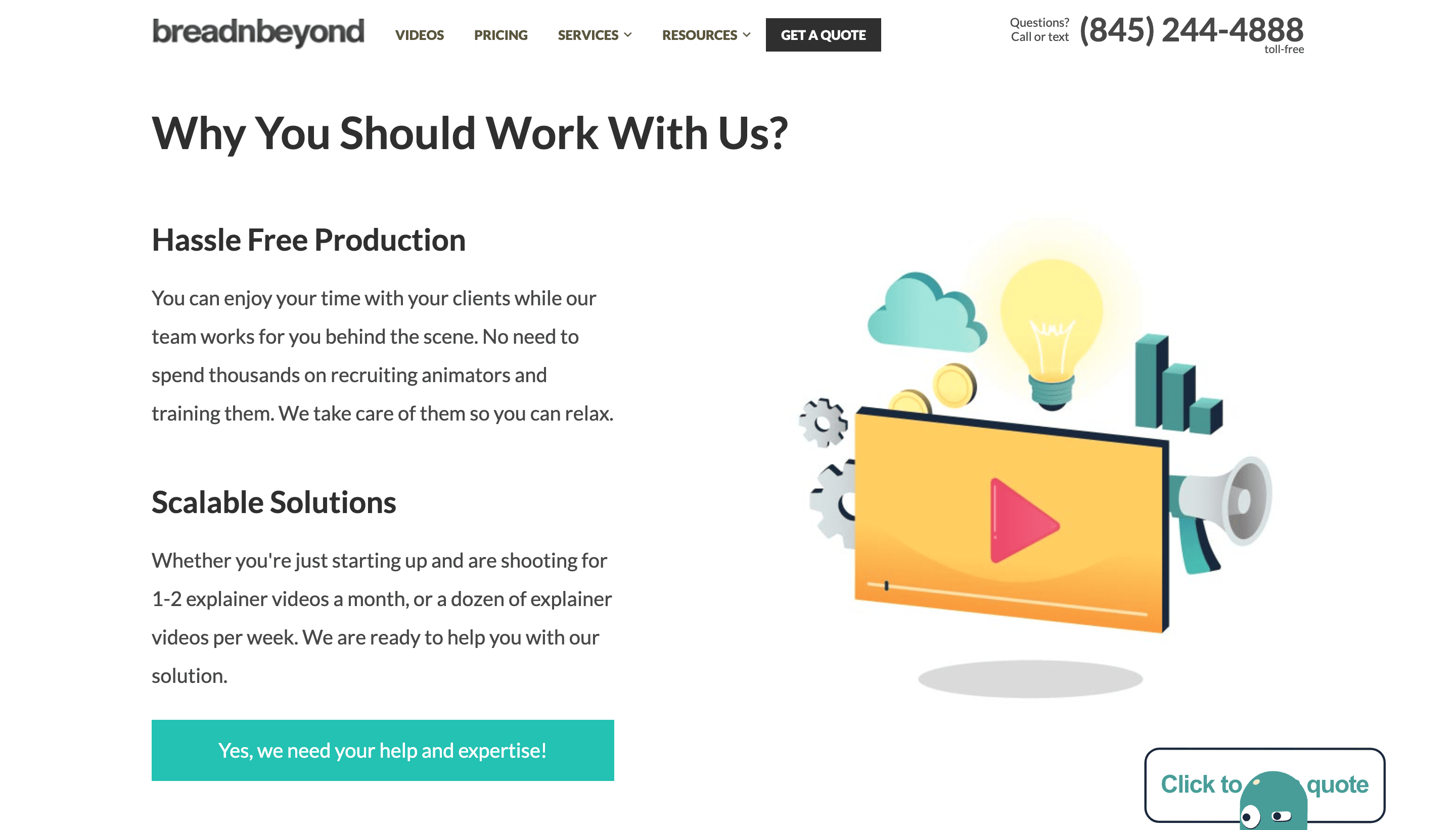
Use conversational language
Write your website copy as if you’re having a conversation with a friend you’ve known for so long. Avoid overly formal or technical language that can create barriers.
This way, you build a connection with them and make your copy more relatable and engaging. When you casually talk to them, they’re most likely to understand what messages you are trying to convey.
That all said, remember to strike a balance between conversational language and maintaining a professional tone that aligns with your brand and industry. Aim to create a friendly and approachable tone that engages your readers while still conveying the necessary information and value proposition of your product or service.
Below is an example of a friendly website copy from Poo-Pourri. The brand talks to its audiences on a more personal level without losing its professional touch. It creates a connection and a sense of assurance that you know them.
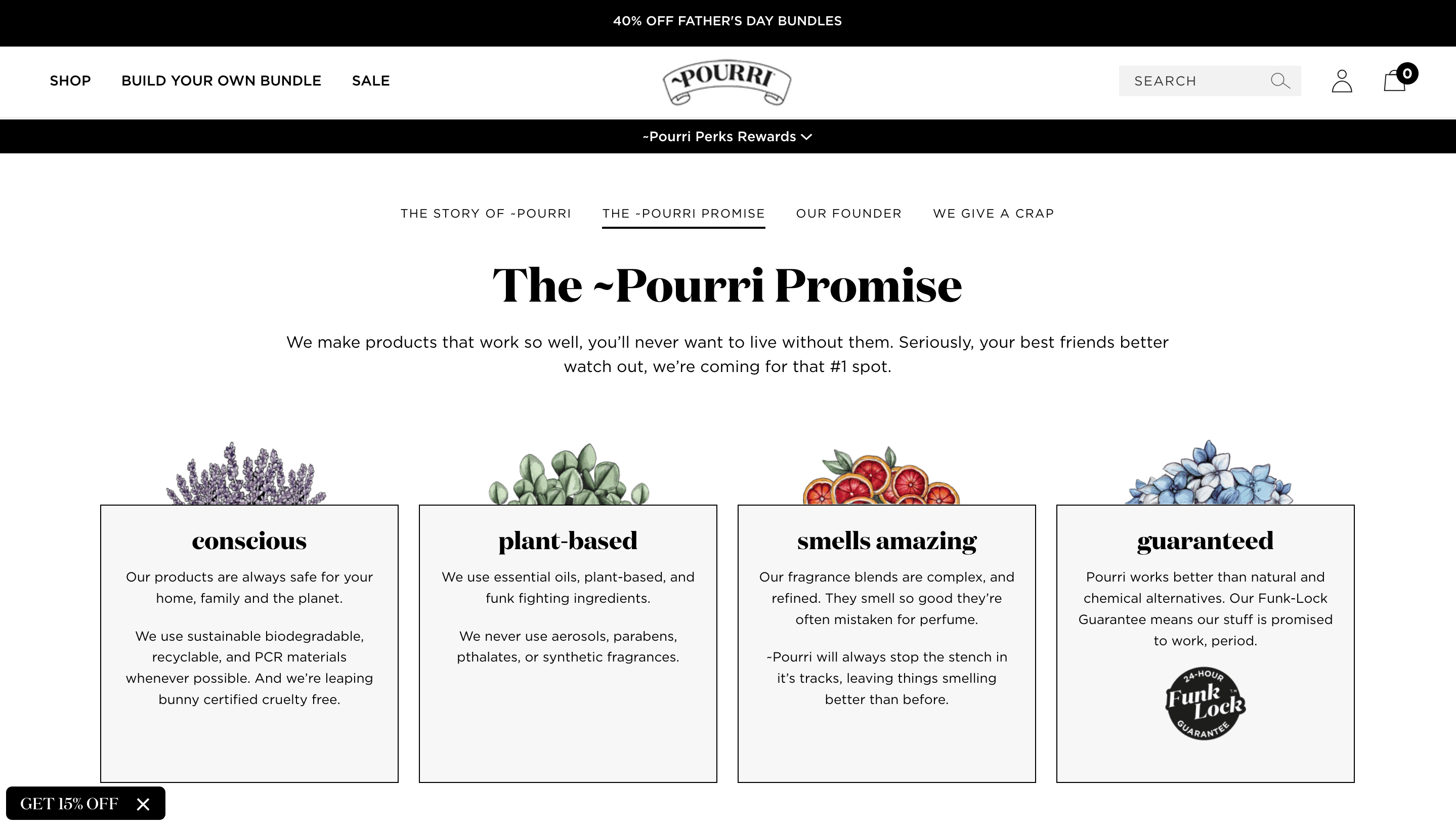
Inject humor and personality
Injecting humor and personality into your website copy can make it more memorable and on-brand. Without personality, your business website is just another bunch of boring, same-old pages on the internet.
Depending on your brand voice and target audience, consider incorporating wit, clever wordplay, or light-hearted humor that aligns with your brand identity. It helps differentiate your content and create a positive and enjoyable reading experience.
Here’s an example from Dollar Shave Club. The brand is well-known for its witty storytelling and personality, and they let the personality shine through their headline– without overdoing it.
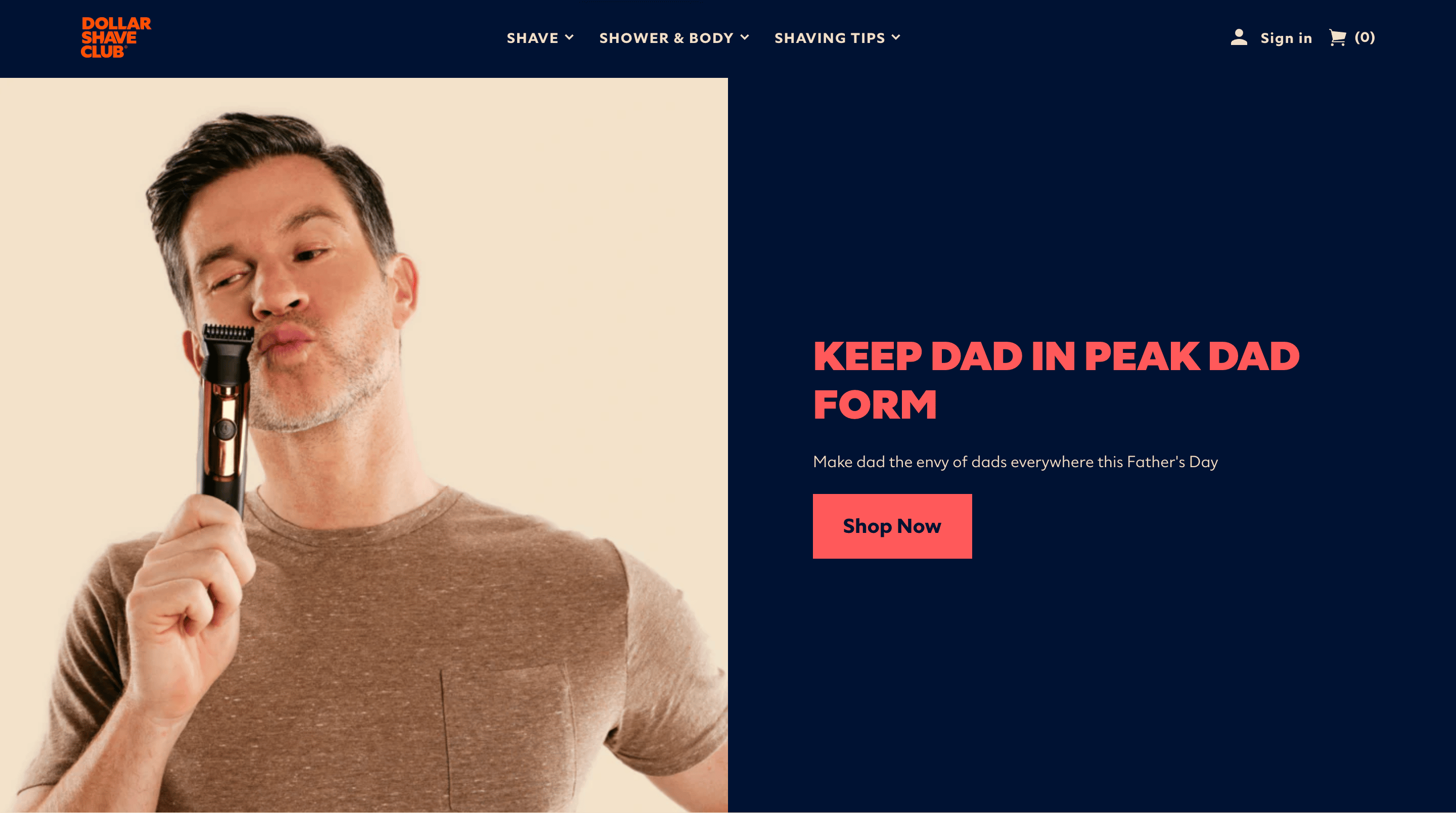
Use microcopy strategically
Microcopy refers to small snippets of text that provide guidance, instructions, or feedback to users. These bite-sized pieces of content play a crucial role in enhancing the user experience and can be strategically used to guide, inform, and engage users.
Take this page from Gusto’s website, for example. Instead of writing bulky paragraphs about how great they are, they break them into smaller sections, making it easier for visitors to read and digest the whole points of the messages:
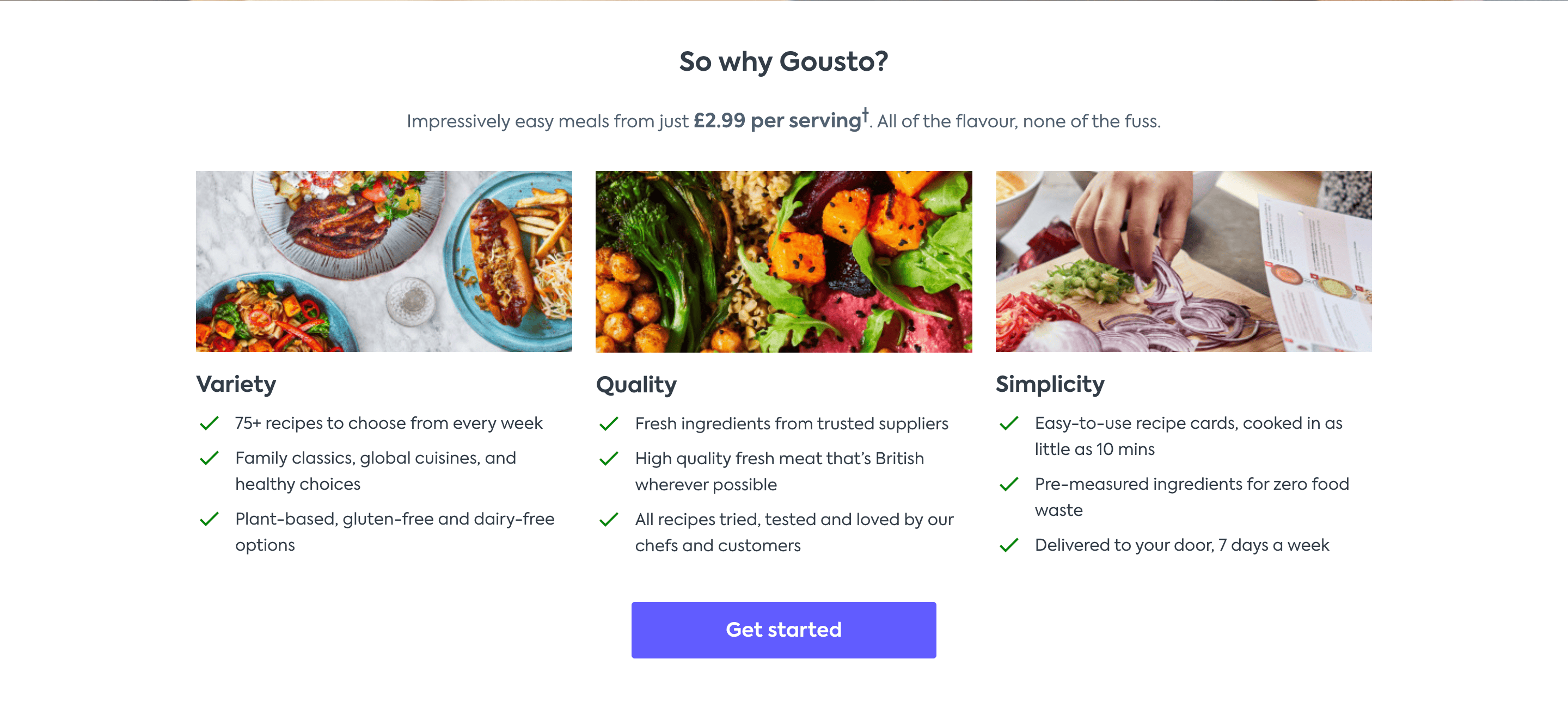
Microcopy can also help users understand how to navigate your website or interact with certain features. For example, error messages, form field instructions, or loading screen texts can be an opportunity to inject personality and create a positive impression.
Experiment with unconventional CTAs
Website copy also applies to call-to-action buttons. The ultimate goal is to create a CTA that resonates with your audience, compels action, and aligns with your overall marketing strategy.
Instead of going for the overused, standard “Buy Now,” you could try something like “Join the Revolution” or “Start Your Journey.” Unconventional CTAs can pique curiosity and evoke emotions that lead to higher conversion rates.
Also, use the contrast color for the button to make the CTA apparent and noticeable. Here’s an example of a visible CTA button from LeadLearnLeap.
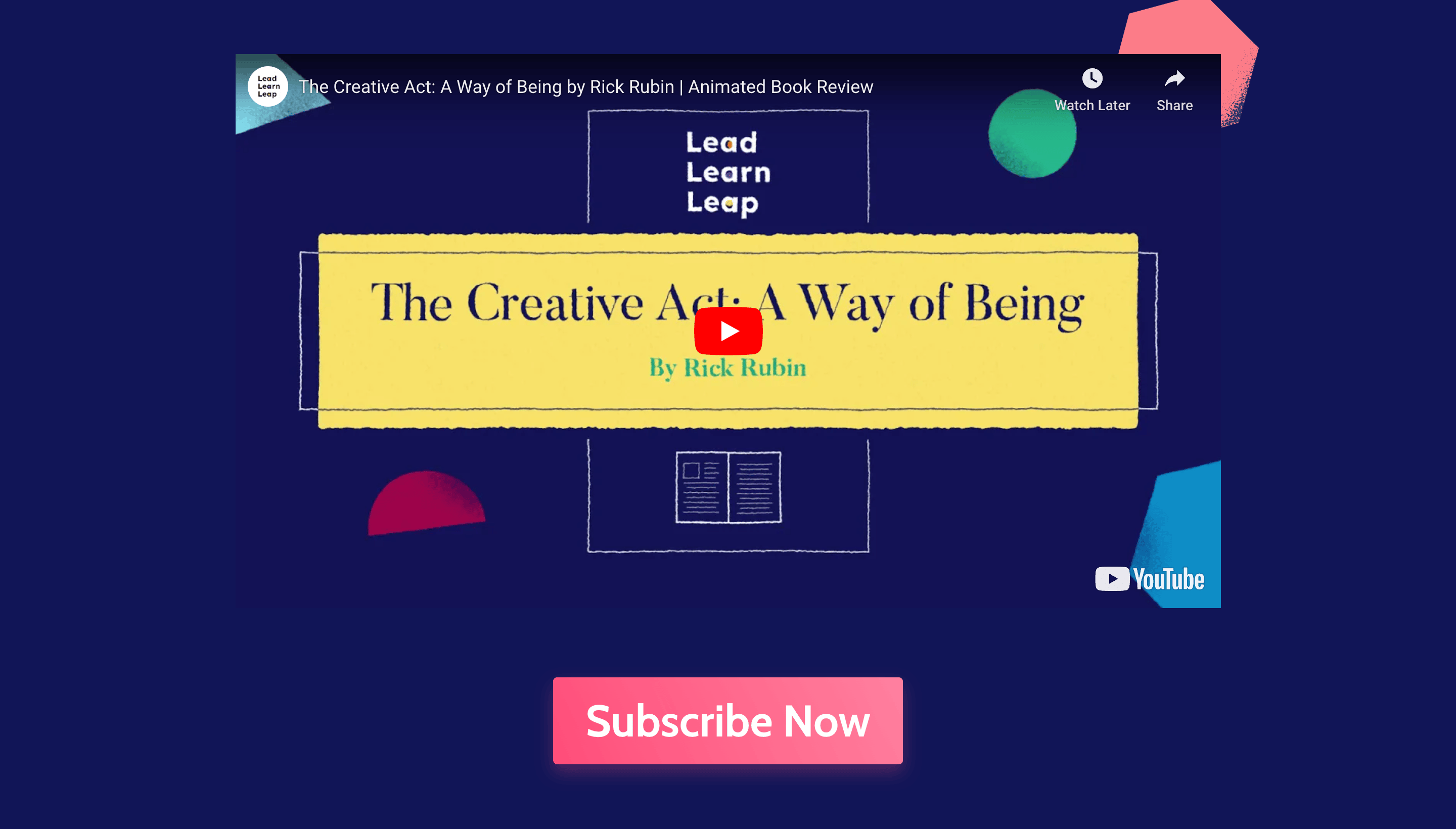
Also, testing and measuring the impact of unconventional CTAs through A/B testing can help you gauge their effectiveness and refine your approach over time.
Read it aloud
After writing your copy, read it aloud to ensure it flows naturally and sounds like a conversation. Place yourself in the shoes of your audience. And ask yourself, “Is this copy convincing enough for me and make me want to buy?.” Overall, this practice helps you identify any awkward or stiff phrasing needing adjustment.
Wrapping Up
Writing a copy for your website might take different approaches to how you usually write for your journal. Also, it’s not a one-time job, as you still need to keep it up to date and regularly add fresh content.
With all those practices mentioned above, now you know what you should bring to the table to captivate your audience with well-thought words. Don’t forget to test and measure the effectiveness of these strategies to ensure they resonate with your specific customer base and help you achieve your conversion goals.
FAQ
What is website copy, and why is it important for engagement?
Website copy refers to the written content on a website’s pages, including headlines, product descriptions, and calls-to-action. It’s crucial for engagement because compelling copy captures visitors’ attention, communicates value, and encourages action.
How can I create engaging website copy?
To create engaging website copy, focus on understanding your target audience, highlighting benefits and unique selling points, using clear and concise language, incorporating storytelling elements, and optimizing for readability and scannability.
Why is it important to tailor website copy to the target audience?
Tailoring website copy to the target audience ensures that the content resonates with their interests, preferences, and needs, increasing the likelihood of engagement, conversion, and customer satisfaction.
What role does storytelling play in website copywriting?
Storytelling in website copywriting helps humanize the brand, establish emotional connections with visitors, and convey key messages in a memorable and engaging way, ultimately enhancing brand perception and engagement.
How can I optimize website copy for search engines (SEO)?
To optimize website copy for SEO, conduct keyword research, incorporate relevant keywords naturally into the copy, write descriptive meta tags and headings, and create high-quality content that addresses user intent and provides value.
Are there any best practices for writing compelling headlines?
Best practices for writing compelling headlines include capturing attention with a clear benefit or hook, using power words and emotional triggers, keeping headlines concise and specific, and testing different variations to determine effectiveness.
What types of calls-to-action (CTAs) are most effective for driving engagement?
Effective calls-to-action for driving engagement include clear, action-oriented phrases that communicate value or urgency, such as “Shop Now,” “Subscribe for Updates,” or “Get Started,” placed strategically throughout the website copy.
How can I maintain consistency in tone and voice across website copy?
Maintaining consistency in tone and voice across website copy involves establishing brand guidelines, understanding the brand personality, and ensuring all content creators adhere to the established style and messaging standards.
Is it important to regularly update and refresh website copy?
Yes, regularly updating and refreshing website copy keeps content relevant, accurate, and engaging for visitors. It also signals to search engines that the website is active and authoritative, potentially improving search rankings.
How can I measure the effectiveness of website copy in driving engagement?
You can measure the effectiveness of website copy in driving engagement by tracking metrics such as bounce rate, time on page, click-through rate on CTAs, conversion rate, and user feedback through surveys or analytics tools.
How can user-focused language enhance website copy?
User-focused language enhances website copy by speaking directly to the needs, desires, and pain points of the target audience. It creates a connection with visitors and makes the copy more relatable and engaging.
What role does visual imagery play in complementing website copy?
Visual imagery complements website copy by providing additional context, evoking emotions, and reinforcing key messages. It enhances the overall user experience and helps capture attention, particularly for visual learners.
How can storytelling techniques be incorporated into product descriptions?
Storytelling techniques can be incorporated into product descriptions by weaving narratives that highlight the product’s features, benefits, and unique selling points. By painting a vivid picture and appealing to the customer’s imagination, storytelling makes the product more compelling.
Are there specific strategies for writing engaging landing page copy?
Yes, strategies for writing engaging landing page copy include focusing on a single objective or offer, using persuasive language and compelling headlines, incorporating social proof and testimonials, and creating a sense of urgency to encourage immediate action.
What role does empathy play in crafting website copy?
Empathy plays a crucial role in crafting website copy by demonstrating understanding and compassion for the visitor’s needs, challenges, and aspirations. It fosters trust, builds rapport, and encourages visitors to engage with the content.
How can the use of power words impact the effectiveness of website copy?
Power words are emotionally charged words that evoke strong reactions and influence behavior. Incorporating power words into website copy can make the content more persuasive, memorable, and impactful, leading to increased engagement and conversions.
Should website copy be optimized for mobile devices?
Yes, website copy should be optimized for mobile devices to ensure a seamless and enjoyable user experience across all devices. This includes using concise and scannable content, optimizing page load times, and ensuring readability on smaller screens.
What role do customer testimonials and case studies play in website copy?
Customer testimonials and case studies provide social proof and credibility, helping to build trust and confidence in the brand. Incorporating them into website copy can persuade visitors of the product or service’s value and encourage conversions.
How can A/B testing be used to improve website copy effectiveness?
A/B testing involves comparing two versions of website copy to determine which performs better in terms of engagement and conversions. By systematically testing different headlines, CTAs, or messaging variations, marketers can identify the most effective copy elements and optimize accordingly.
Are there any ethical considerations to keep in mind when writing website copy?
Yes, ethical considerations when writing website copy include being truthful and transparent in your messaging, respecting user privacy and data protection regulations, avoiding deceptive or manipulative tactics, and ensuring that the copy aligns with the brand’s values and mission.
Author
 Andre Oentoro is the founder of Breadnbeyond, an award-winning explainer video company. He helps businesses increase conversion rates, close more sales, and get positive ROI from explainer videos (in that order).
Andre Oentoro is the founder of Breadnbeyond, an award-winning explainer video company. He helps businesses increase conversion rates, close more sales, and get positive ROI from explainer videos (in that order).
Twitter: @breadnbeyond
Email: andre@breadnbeyond.com
LinkedIn: Andre Oentoro
Top AI Marketing Generators
Master the Art of Video Marketing
AI-Powered Tools to Ideate, Optimize, and Amplify!
- Spark Creativity: Unleash the most effective video ideas, scripts, and engaging hooks with our AI Generators.
- Optimize Instantly: Elevate your YouTube presence by optimizing video Titles, Descriptions, and Tags in seconds.
- Amplify Your Reach: Effortlessly craft social media, email, and ad copy to maximize your video’s impact.